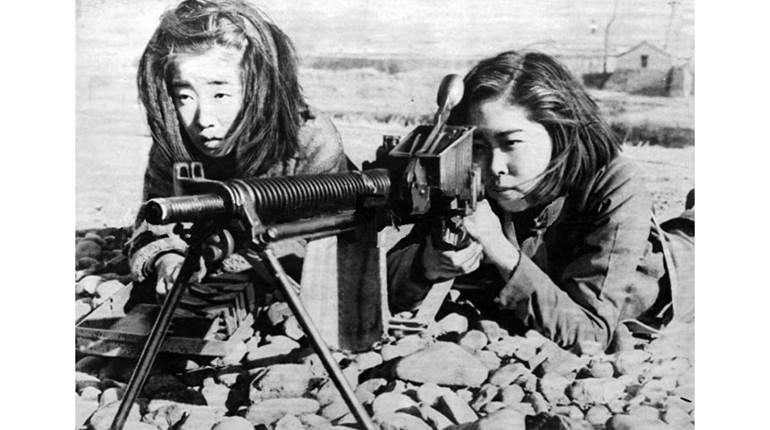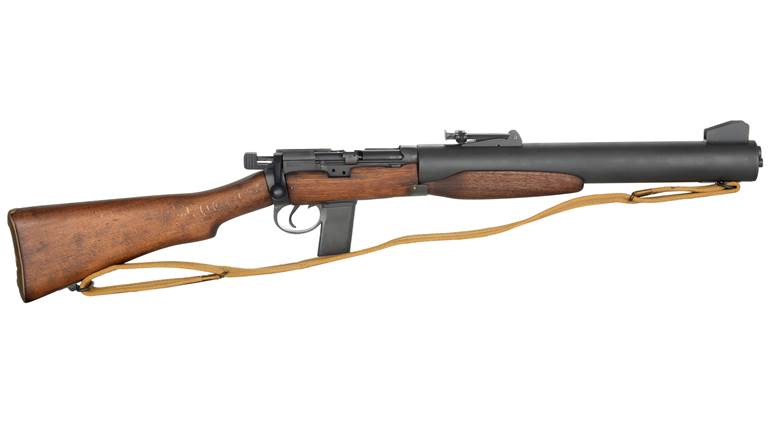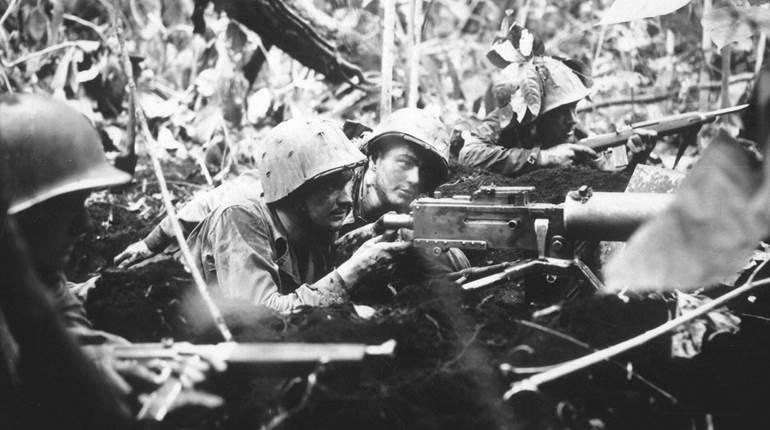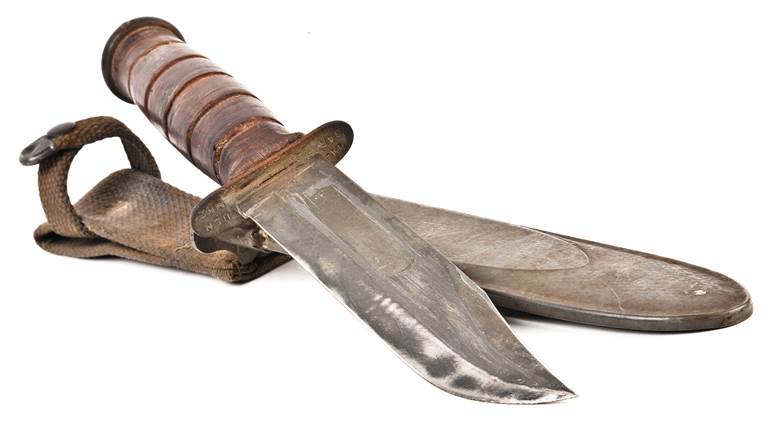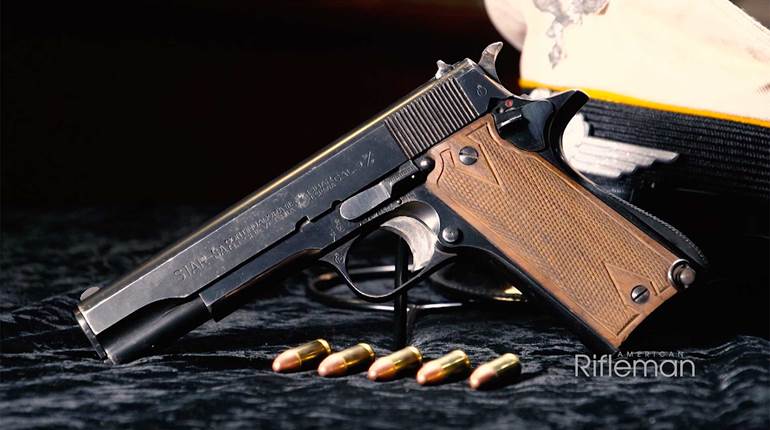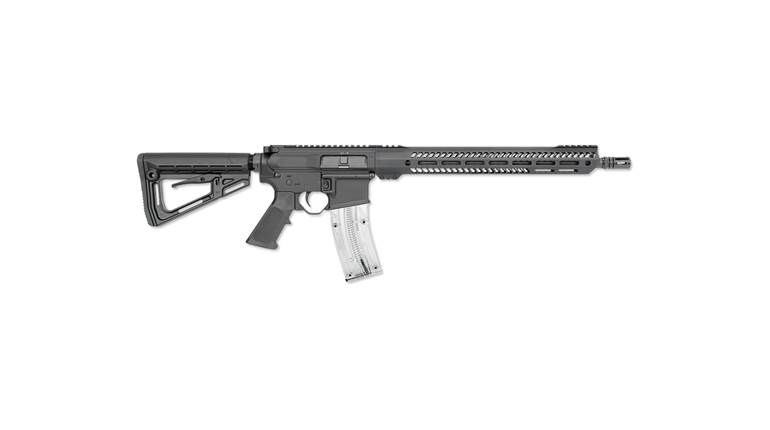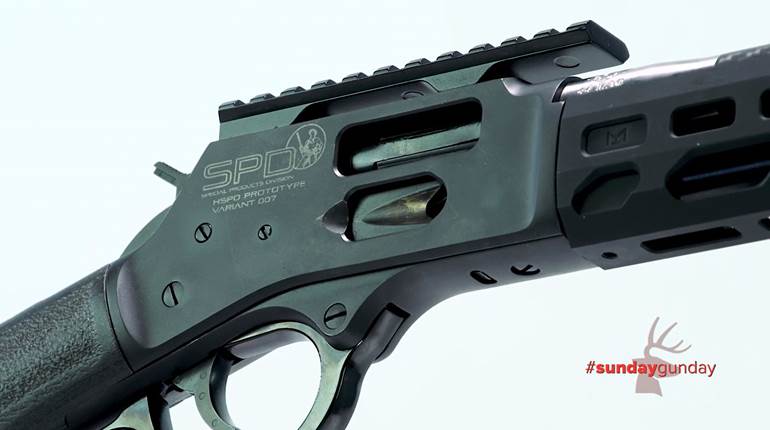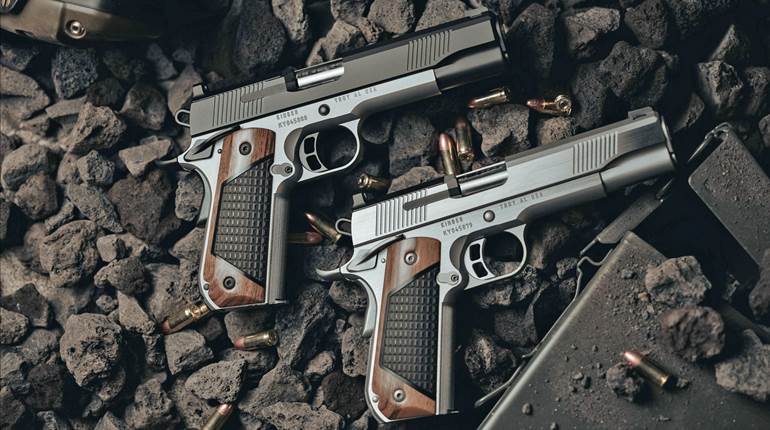
Based on Cornelius Ryan’s Longest Day, the epic Hollywood blockbuster of the same name featured actor Peter Lawford carrying what is arguably the most famous rifle of Operation Overlord. The problem is that that rifle, made famous by Hollywood, wasn’t there on June 6 1944.
Lawford played Simon Fraser, the 17th Baron Lovat and the 25th chief of the clan Frasier. Winston Churchill called Lovat, “the mildest-mannered man that ever scuttled a ship or cut a throat.”
Lord Lovat was one of the first volunteers for the Commando units formed in 1940, and his first combat action with No. 4 Commando was in 1941. And it was no coincidence that much of the highly specialized training the commandos received was undertaken in the highlands of Scotland.
On the Dieppe Raid in August 1942-a disaster whose lessons paved the way for the success of Operation Overlord, Lord Lovat carried his personal Mannlicher-Shoenauer carbine. You can see it along with an M1911 Government Model on his hip. He was hunter and a Lord, and as such, he decided to bring his own rifle from home.
On D-Day, Brigadier Lord Lovat, Distinguished Service Order, commanded the First Special Service Brigade and landed on Sword Beach. The brigade’s objective was to move the six miles inland and link up with Major John Howard’s D Company of the 2nd Oxfordshire & Buckinghamshire Light Infantry, their sappers and troopers of 7 Para holding the bridges, thus shutting off the route to beaches for a German counterattack. Major Howard’s capture of “Pegasus Bridge” was one of the most important military feats of D-Day.
In one of D-Day’s most iconic images, you can see Lord Lovat’s lanky frame over the shoulder of Bill Millen, his personal piper, wading into the surf.
Lovat wrote: “The water was knee-deep when Piper Millin struck up ‘Blue Bonnets,’ keeping the pipes going as he played the commandos up the beach. It was not a place to hang about in, and we stood not on the order of our going.”
And it was the sound of Millen’s bagpipes that the relived airborne troops heard at the link up.
It’s a great story, and one of the best vignettes of the movie The Longest Day. The problem is that Lord Lovat-according to his autobiography March Past and the current owner of his Mannlicher-carried a different rifle that day. And like the Gillies he grew up with and the commandoes he trained, Lord Lovat actually did a bit of stalking, but of “Jerry,” on the way.
In the battle for St. Aubin on the way to Pegasus Bridge, Lovat wrote: “The enemy-a platoon about thirty strong--looked a soft touch: the sun was in their eyes and we were unobserved. I made a quick decision to ambush them. It was a relief to get the rucksack off-straps were already burning shoulders--then tee up behind its bulk and go into action with a light, short-barreled U.S. Army carbine. Joe Lawrence and Salsbury’s brother, a dispatch rider, sneaked one of the quick-firing [Vickers] K Guns up on to a shed. The Germans were five hundred yards away. We had not been seen. They were in the bag.”
So Hollywood, as is so often the case, had it wrong about Lord Lovat and his Mannlicher that day. Lord Lovat actually carried a U.S. Carbine, Caliber .30. But for this error--and a few others in otherwise excellent and important film, Hollywood can be forgiven.
Lovat, by the way, was wounded on the attack on Breville on June 12, ending his combat service. He died in 1995.
I’d like to close this post by noting and honoring the supreme sacrifice made by the soldiers, sailors and airmen-regardless of their country or rank--that gave all to secure the Freedoms we enjoy today a half a world away 70 years ago this day. Lest we forget …














